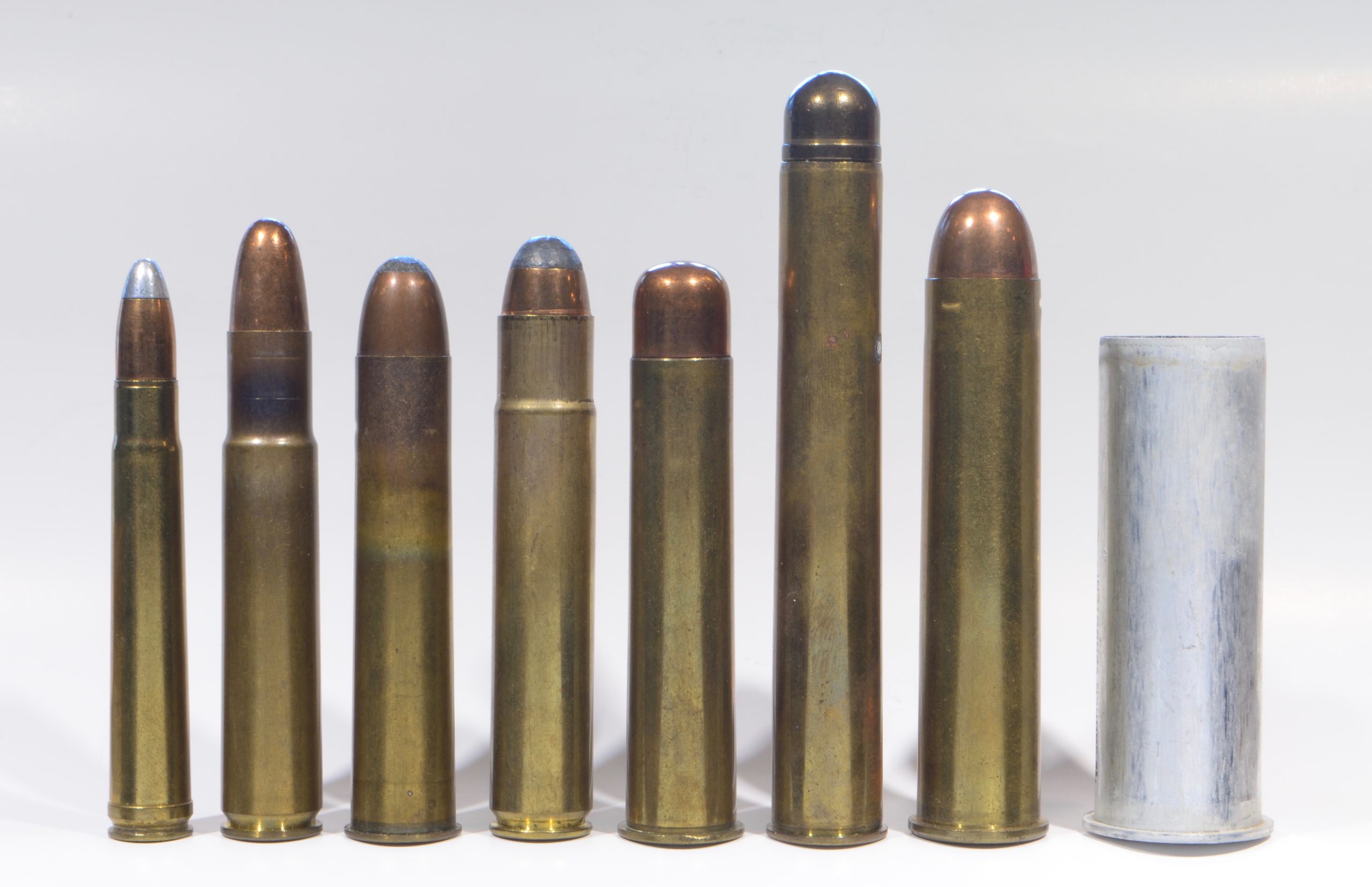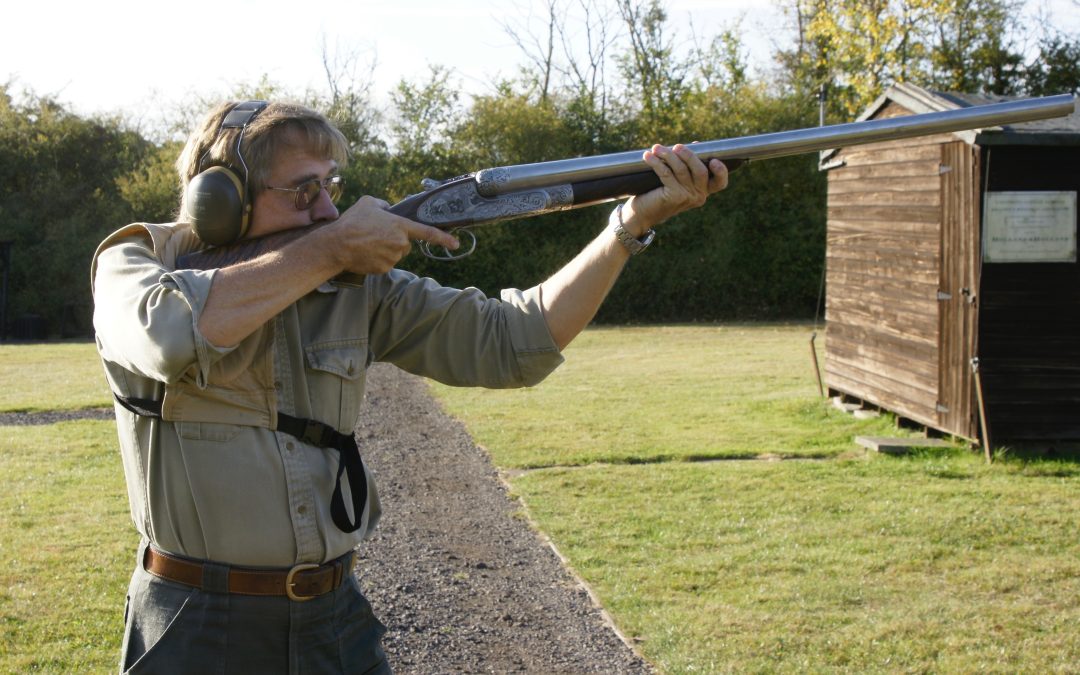Wieland at the Holland & Holland shooting ground in 2009, firing a 4-bore H&H ‘Royal’ then under
construction for an American client.
This article first appeared in Shooting Times in 2019
By Terry Wieland
In 1991, Michael McIntosh dragged me over to a booth at SCI to talk to a jewelry dealer who was letting on that he was going to top the recent .700 H&H with a — you guessed it — .800 Nitro Express. Standing six-foot-six in his cowboy heels, and festooned with silver and turquoise, this gentleman expounded at length about this project.
Naturally, nothing ever came of it. Nor should it have. Alas, the same cannot be said of subsequent attempts by riflemakers, wildcatters, and assorted nut-cases to create something more powerful than anything that has gone before. Had they perused the literature, or had any real hunting experience, or talked to someone who had, they would have realized that the practical limit of dangerous-game cartridges was reached with the introduction in 1900 of the .600 Nitro Express — and even that was overkill.
Almost 20 years after my surreal experience with the turquoise-and-snake-oil salesman, I visited Holland & Holland and had an opportunity to shoot a new 4-bore double rifle under construction for an American client-collector who ordered it simply to have something different. It was different, all right. The 4-bore dates from the 1800s, and they were abandoned for a reason. At 24 pounds, it was all you could do to hold it to your shoulder. The recoil was huge but tolerable, and the target looked like a sparrow had flown through it. Undoubtedly, it would have decked a mastodon. But a practical hunting rifle? Absolutely not.
John “Pondoro” Taylor believed the .600 NE, which usually weighs 16 pounds, was too heavy for an everyday rifle and should be carried by a gunbearer, reserved for the direst of emergencies. In the opinion of Tony Henley, a long-time PH who had used almost everything, the largest practical hunting rifle — and probably the best one ever created for elephants — was the .577 Nitro Express. It combined maximum power with a weight of 14 pounds that made the recoil tolerable.
Most creators of über-cartridges conjure them up in the comfort of their workshops, and their real goal is 15 minutes of fame as the originator of the “most powerful” cartridge.
In the days of black powder and muzzleloaders, there was some excuse for ultra-huge bores, but even some of those went overboard. Sir Samuel Baker had a 2-bore single-barrel made by George Gibbs that fired a ball weighing eight ounces. The recoil was unbelievable. In one account, Baker described firing it at an elephant, being spun around, and falling to the ground with a nosebleed. The elephant also fell, and the question was which would get to his feet first to finish off the other. Baker did, with a 10-bore double rifle.
With more actual hunting experience than any hundred serious hunters today put together, Sir Samuel later conceived the .577 and regarded that the practical limit. Personally, I’ll take his word for it.
Various people have tried to come up with comparably devastating rounds for bolt actions, and I have fired a few. One, the .585 GMA

Big bores real and imagined, from left: For comparison, the .375 H&H, then the .505 Gibbs, .577 NE, .585 GMA Express, .600 NE, an experimental lengthened .600 NE, pondered by A-Square in the early 1990s and mercifully abandoned, the .700 H&H, and finally an industrial-application 4-bore cartridge case. Only four of these (.375, .505, .577, .600) have any practical hunting application, and one of those (.600) is extremely limited.
Express, was created by Granite Mountain. It was so big, it was plagued by ignition problems even using the over-sized Federal 217 primer, and the rifle itself was heavy and cumbersome. With a charging Cape buffalo, you don’t want cumbersome, and you certainly don’t want hang-fires.
The question I always had was, why bother? If you can’t drop something with a .505 Gibbs, I doubt you’ll do any better with a .585 GMA, and the Gibbs at least is chambered in a comfortable, usable rifle.
Holland & Holland only created the .700 in the 1980s at the behest of Bill Feldstein, an American collector who could not get a .600 because H&H had made their last one — and sold it for a fabulous sum on that basis — in the 1970s. The .700 H&H (its proper name) was a stunt and nothing more, although they built a dozen subsequently, and made money doing it. As a practical hunting rifle, however, forget it.

